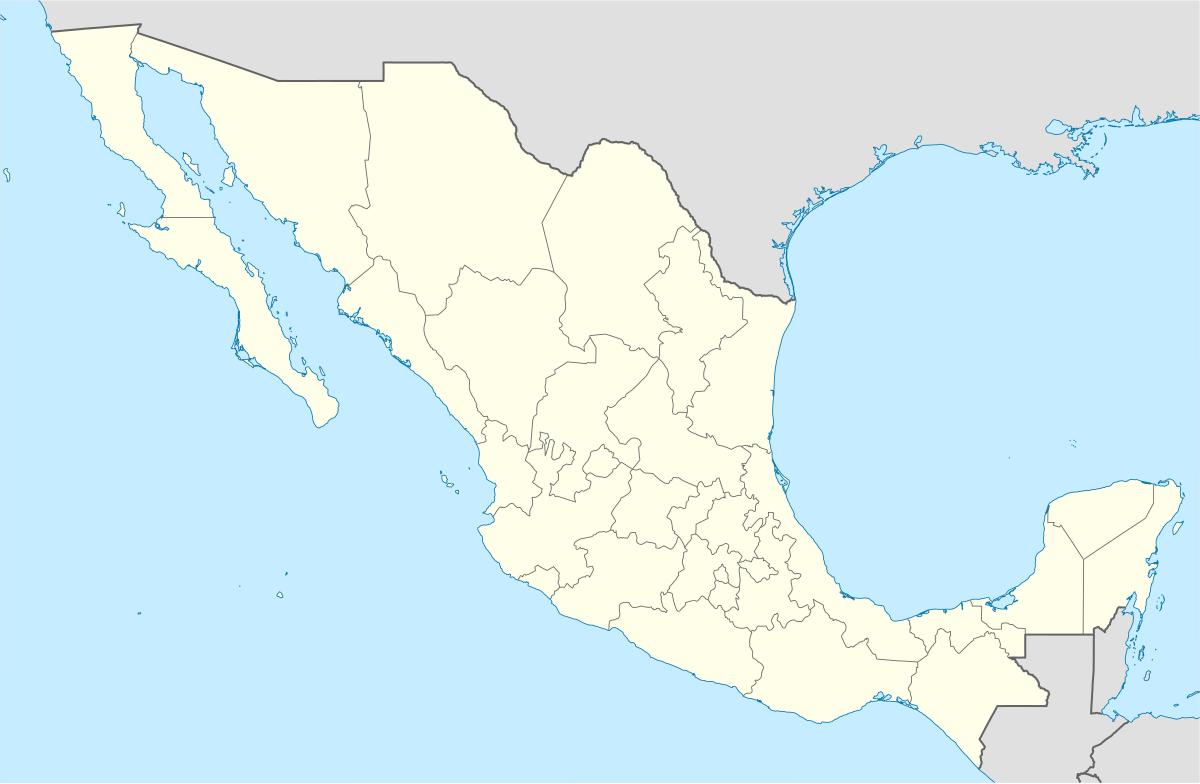Pasta de Conchos mine disaster
The Pasta de Conchos mine disaster occurred at approximately 2:30 a.m. CST on February 19, 2006, after a methane explosion within a coal mine near Nueva Rosita, San Juan de Sabinas municipality, in the Mexican state of Coahuila. The mines were run by Grupo México, the largest mining company in the country. It was estimated that 65 miners, who were working the 10 p.m. to 6 a.m. shift that morning, were trapped underground by the explosion. Only 2 of the 65 bodies have been recovered.
| Date | 19 February 2006 – 25 February 2006 (6 days) |
|---|---|
| Time | 14:05 CST |
| Location | San Juan de Sabinas, Coahuila, México
Rescue progress (suspended) Rescue plans suspended, after no more than 2 bodies were found (3%) 65
2
|
| Coordinates | 27°56′N 101°13′W |
There have been conflicting reports regarding the depth at which the miners were trapped. The National Mining and Metal Workers Union (SNTMMSRM) stated that the trapped miners were approximately 1,600 feet (490 m) below ground, via a mile-long horizontal shaft. Grupo México released a statement saying that the miners were about 500 feet (150 m) below ground when the explosion occurred. Guadalupe Rosales Martínez, the sister of a worker saved from the mine opening, told the Los Angeles Times that the workers had previously complained about a gas leak in the mine.[1] Norma Vitela, the wife of a mine worker trapped inside the mine, told The Miami Herald that her husband complained about the same leak.[2]
By February 21, 2006 Grupo México search teams and relatives of the trapped miners were beginning to lose hope. Each miner was allotted an oxygen pack, but the pack only guaranteed the miners six hours of oxygen. The Governor of Coahuila, Humberto Moreira Valdés, told the Televisa television network that the mine's ventilation service, which uses fans to import oxygen and export dangerous gases, was still in operation. However, the February 21 edition of The Miami Herald remarked, "Even so, they could not be certain the precious oxygen was arriving to where the miners were trapped."[2]
It was reported that mine workers had gone on strike against Grupo México at least 14 times, "not only for salary increases… but because of its constant refusal to review security and health measures." Grupo México said that they, in conjunction with the mining union, signed a certificate on February 7, 2006 declaring the mine safe.[3]
On February 23, 2006 Grupo México advanced to a part of the mine shaft where they believed two of the 65 workers were trapped. However, they found nobody, leading them to believe the force of the explosion knocked them through the mine shaft deeper than they had anticipated.[3] The next day, Grupo México advanced approximately halfway into the 1.75-mile long mine, where an additional twenty-four miners were expected to have been found. Again, nobody was found, and Grupo México hypothesized that either the miners were buried under debris or the miners were located in a deeper part of the mine.[3] On the evening of February 24, Grupo México announced that search efforts were to be suspended for two or three days, due to the search teams advancing to a portion of the mine which leaked out high levels of natural gas. On the afternoon of February 25 the CEO of Grupo México confirmed during a press conference that "there was no possibility of survival after the methane explosion", based on a scientific report.[4] The following day the Secretary of Labor, Francisco Javier Salazar Sáenz, and Governor Moreira announced the mine would be closed indefinitely once all the bodies were recovered.[5]
The Diario newspaper of Ciudad Juárez published a report from Mexican officials and the U.S. Mine Safety and Health Administration, stating that due to the high levels of gas in the mine, it would be very rare, if not impossible, to have any survivors from the rescue efforts.[3]
After the rescue of 33 trapped miners in October 2010 in Copiapó, Chile, bishop Raúl Vera demanded that the case be reopened.[6]
According to the IndustriALL Global Union, as of August 2016, "Ten years after the mining homicide at Pasta de Conchos, Mexico, the government has still not conducted a thorough investigation into the real causes of the disaster, brought those responsible to justice, recovered the bodies or compensated the families of the victims."[7]
On February 18, 2020, the Mexican government announced it would resume the search for 63 bodies still lost in the accident. Grupo México insisted they voluntarily returned the concession to the government. Families of the victims say the company did not conduct a thorough search because they did not want the deplorable working conditions revealed; company officials insist it is too dangerous to carry out the rescue operation. In 2018 the Inter-American Commission on Human Rights agreed with the families. President Lopez Obrador promised in 2019 that he would recover the bodies.[8]
References
| Wikinews has related news: |
- Gas Blast Traps 65 Mexican Miners, Los Angeles Times, February 19, 2006.
- Kin of miners losing hope, The Miami Herald, February 21, 2006.
- Search for Mexican miners suspended Diario, Ciudad Juárez, February 25, 2006.
- Es oficial, no hay sobrevivientes en mina, El Universal Online, Mexico City, February 25, 2006.
- Todos están muertos, El Universal Online, Mexico City, February 26, 2006.
- Chilean rescue revives anger in Mexico over 2006 miners' tragedy Archived 2010-10-18 at the Wayback Machine, Monsters and Critics, October 14, 2010.
- "Still no justice, ten years after the Pasta de Conchos homicide". IndustriALL Global Union. August 2, 2016. Retrieved August 28, 2016.
- Mexico will resume the search for the bodies of the miners who died on [sic] the tragic Pasta de Conchos accident El Universal (in English) 20 Feb 2020
